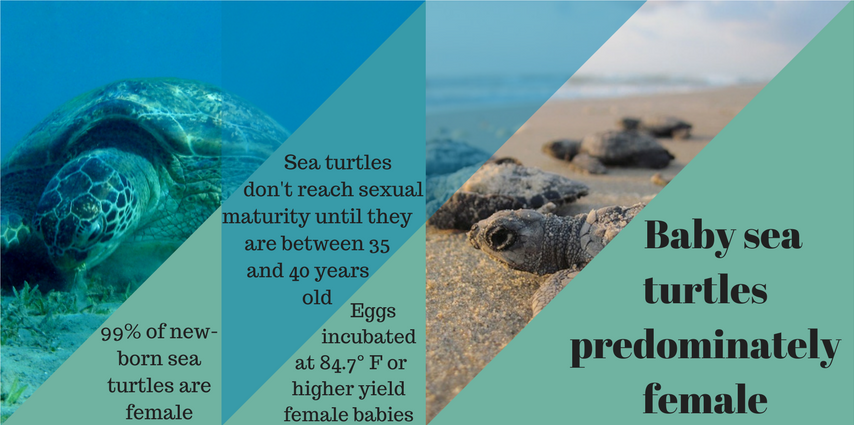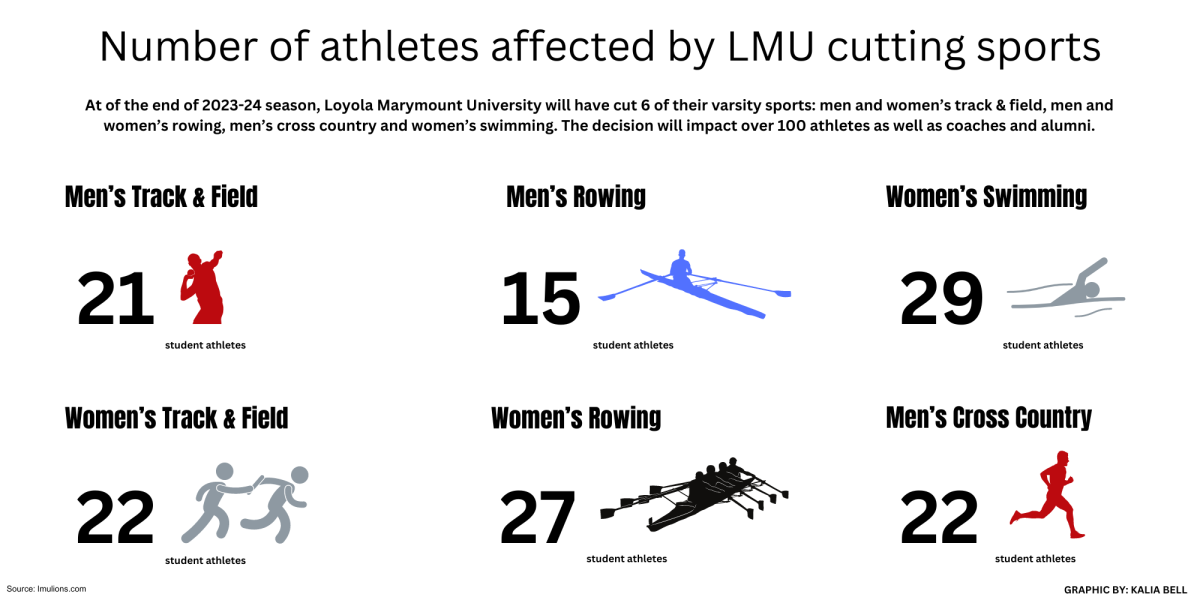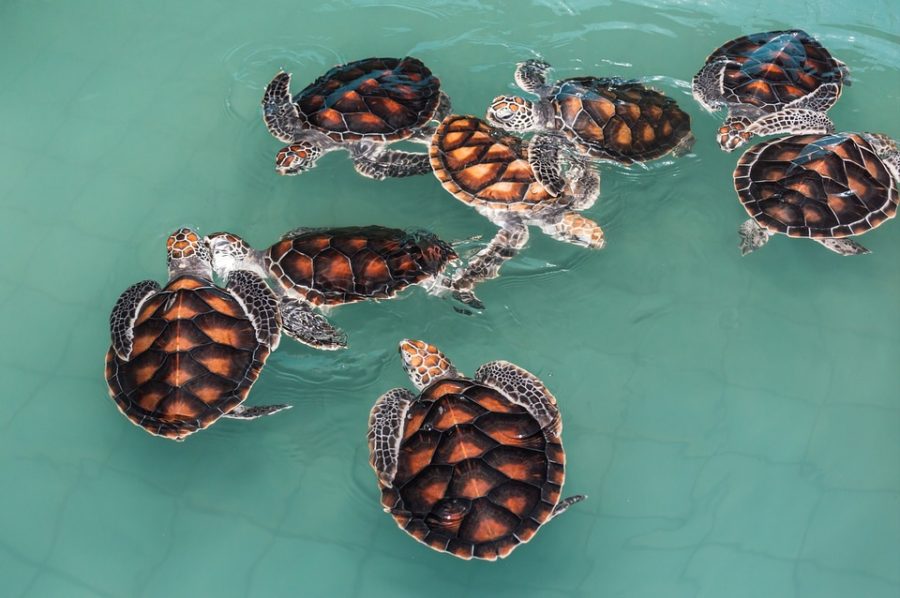
A recent study conducted by Michael Jensen and Camryn Allen, published on Jan. 8, 2018 in science journal Current Biology, showed that due to rising temperatures, baby green Australian sea turtles are almost exclusively being born female.
“Ninety-nine percent of immature green turtles born in the northern part of the [Australian] reef are female,” stated a New York Times article written by Karen Weintraub. “Among adult turtles, eighty-seven percent are female, suggesting that there has been a shift in gender ratios over the last few decades.”
The sex of a sea turtle depends on the incubation temperature of its egg rather than on its chromosomes; a sea turtle is a temperature-dependent sex determination (TSD) species. According to Weintraub’s article, “if the sand temperature tops 84.7 degrees during incubation, only females will emerge.” As temperatures continue to rise due to factors such as global warming, fewer and fewer male turtles will be born.
“While rising temperatures may initially result in increased female population sizes, the lack of male turtles will eventually impact the overall fertility of females in the population,” stated Jensen and Allen’s study.
In addition, sea turtles live long lives of 60 to 70 years and do not reach reproductive capacity until age 25 to 35. Thus, the effects of the gender imbalance will take a long time to appear.
A late reproductive age and a difficulty determining the gender of sea turtles have caused the issue to “have gone unnoticed for decades, with potentially negative effects,” stated the study. Sea turtles do not have any external genitalia and their DNA does not indicate gender, so researchers must examine hormones and gonads of the turtles in order to determine sex.
According to a National Geographic article by Craig Welch, “determining when the number of males may drop too low is difficult. The answer can change by species and location. In addition, the very thing that determines sex— temperature— can itself be impacted by local factors.”
Not only is the time in which the imbalance will greatly affect the turtle population unknown, but the best ways to help the turtle populations remain in question as well.
“We need to learn more about how TSD species cope with rapid climate change, and we need to learn more about the male component in sea turtles and other TSD species to implement effective conservation efforts in the long term,” stated Jensen and Allen.
Given that the study focused only on sea turtles in the Great Barrier Reef, scientists do not know for sure how many other sea turtle populations are experiencing the same problem.
“What worries Allen is what her research suggests about thousands of sea turtle populations around the world that have yet to be studied in this way, which is virtually all of them,” stated Welch. “She and Jensen plan to continue applying their techniques to new nesting places and already have collected samples in Guam, Hawaii and Saipan.”
Furthermore, sea turtles already face a variety of other problems threatening their survival, including humans eating their eggs, city lights disturbing their journey to the sea and higher sea levels disrupting where they lay their eggs.
“If you can’t fix poverty, climate change, light pollution and all these other things, then turtles [will] have a hard time surviving,” said environmental science teacher Jennifer Boyd. “People are doing good things to help the turtles, but there are so many other factors that are against them.”
























